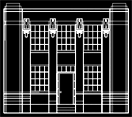Architectural Design: How Wharry Blends Utility, Creativity, and Reliability

Architectural design is a field of many disciplines. Strong architectural design requires a studied understanding of the arts, the sciences, and even human behavior. Without artistic direction, architectural designs can turn out bland at best and awkward or uncomfortable at worst. Without scientific guidance, it hopefully goes without saying that the safety of the building’s occupants could be at risk. Finally, without an understanding of human behavior, architectural designs can come across as unintuitive or even pose an eventual safety risk.
Here at Wharry Engineering, we value every aspect of architectural design. That’s why we offer some of the best, most informed architectural designs for our clients. In this month’s blog post, we’ll be discussing how we at Wharry blend utility, creativity, and reliability to turn our client’s dream designs into reality.
Utility in Architectural Design
The basis of all architectural design is the purpose or utility that the prospective building will serve. After all, without a purpose for a building, why build anything at all?
Our years of experience serving clients of all sectors has provided us with a rich understanding of the many purposes a building may serve. We’ve had clients in sectors such as:
- Government
- Education
- Religion
- Industrial
- Residential
With each sector’s unique purposes also comes a unique approach to architectural design. The needs your average bowling alley patron have, for instance, will vary wildly from that patron’s home or church.
The Creativity of Strong Architectural Design
Creativity plays a multifaceted role in crafting worthwhile architectural designs. From the outside, an effective creative design to a business, for instance, may inspire potential customers to visit it. Internally, creativity plays a crucial role in making designs that feel easy to navigate and intuitively understand as well as foundationally beautiful or reverent.
The Importance of Reliability in Architectural Design
Reliability is critical in architectural design to ensure long-term usage of a building as well as to keep its occupants safe. This means that an architectural designer needs to not only understand and predict how weather conditions consistent use will affect their designs, but also how the design itself will fare as the building ages. Since we at Wharry Engineering have a long history of creating new architectural designs from scratch as well as restoring decades-old designs, we have a firm understanding of all aspects of a building’s aging process.
Are you looking for experienced architecture professionals who address all aspects of a building’s design? If so, then contact us at Wharry Engineering today for more information.


